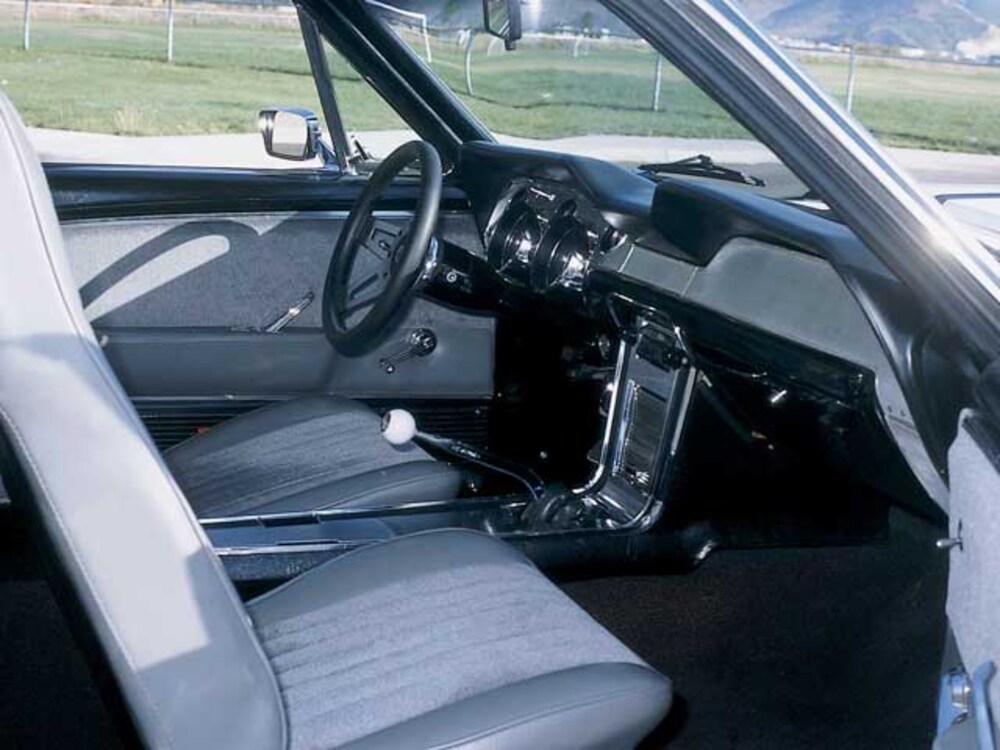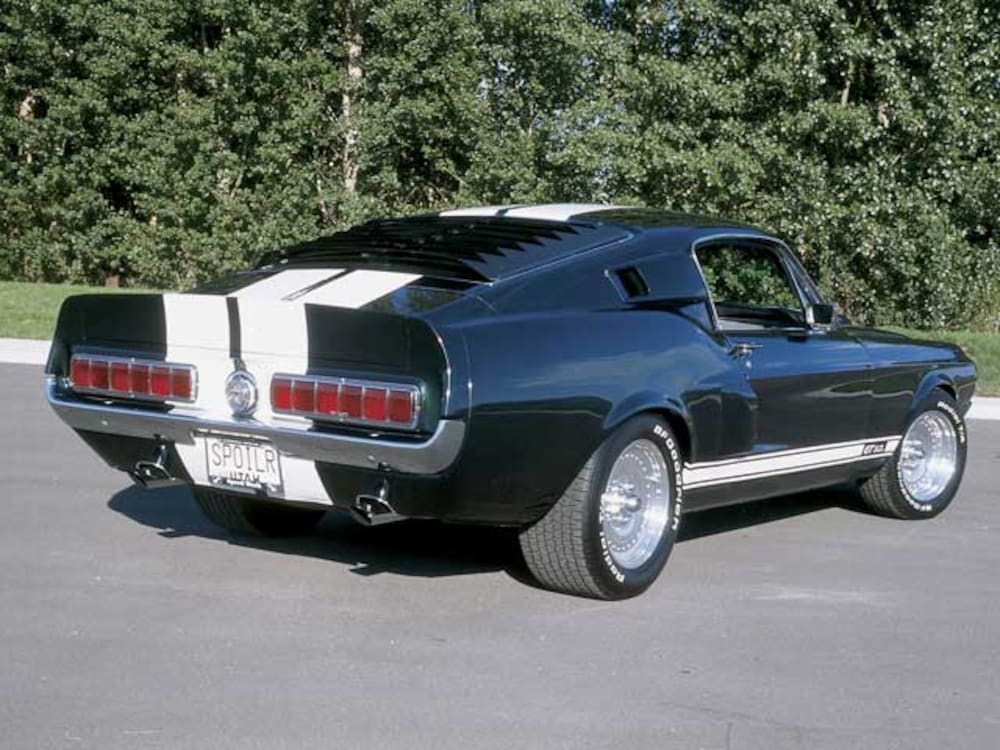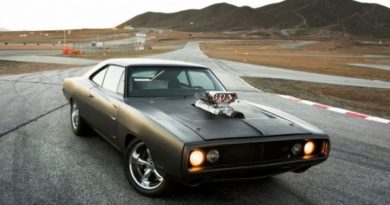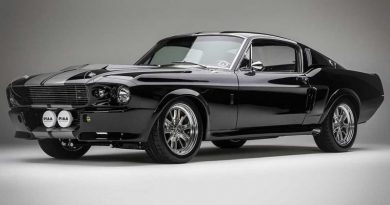1967 Ford Mustang GT Fastback
When this 1967 Ford Mustang GT Fastback rolled off the San Jose assembly line early in the production cycle (mid-September 1966), it was Dark Moss Green and destined for Salt Lake City.
For this Mustang, craftsmanship is more than skin deep. Under the fiberglass bonnet is a warmed-up ’70 302 small-block. Felt’s Auto Machine Shop massaged the 302, boring the block .030-inch oversize, checking the line bore and dynamically balancing the bottom end. Stock 302 connecting rods were shot-peened for strength. Forged 7.5:1 pistons were used because the 302 has a B&M supercharger. To huff major quantities of air into the low compression chambers, Mike had the heads match-ported. Large 1.97-inch Chevrolet intake valves make light work of airflow. A Lunati crankshaft exercises the stopcocks. The B&M supercharger rests on a special intake manifold. Holley carburetion that flows 650 cfm with the butterflies pinned gets the job done nicely for street or strip. A Mallory ignition lights the fire. Those chromed Ford Racing headers scavenge the spent gasses into 3-inch pipes with Flowmasters. A four-row-core cross-flow radiator keeps things cool.

Overall, the second-generation Mustang is more muscular in appearance with its more pronounced Coke-bottle shape, larger grille opening, deeply sculptured side sheet metal ending with a pair of simulated brake-cooling scoops, and a concave rear panel with inset six-lens tail lights. The optional GT Equipment Group on this fastback adds even more performance styling with a pair of grille-mounted fog lights, white rocker-panel stripes with GT emblems, a GT gas cap and rear valance cutouts for the tailpipes. GTs also came from the factory with the Special Handling Package that upgraded the suspension with higher-rate springs, stiffer shocks and a larger front stabilizer bar. This old-school 1967 Mustang GT fastback is also equipped with the louvered hood that supplies functional rear-facing vents with integral turn-signal indicators.

Years ago, a movie car chase was made with real stunt drivers, driving real cars, on real roads. There wasn’t any computerized CGI to make a car go flying through a building, over a helicopter, then land on some interstate on-ramp with barely a scratch. The car chase was real. You could hear the engine rev, the tires squeal, and feel the fear.




